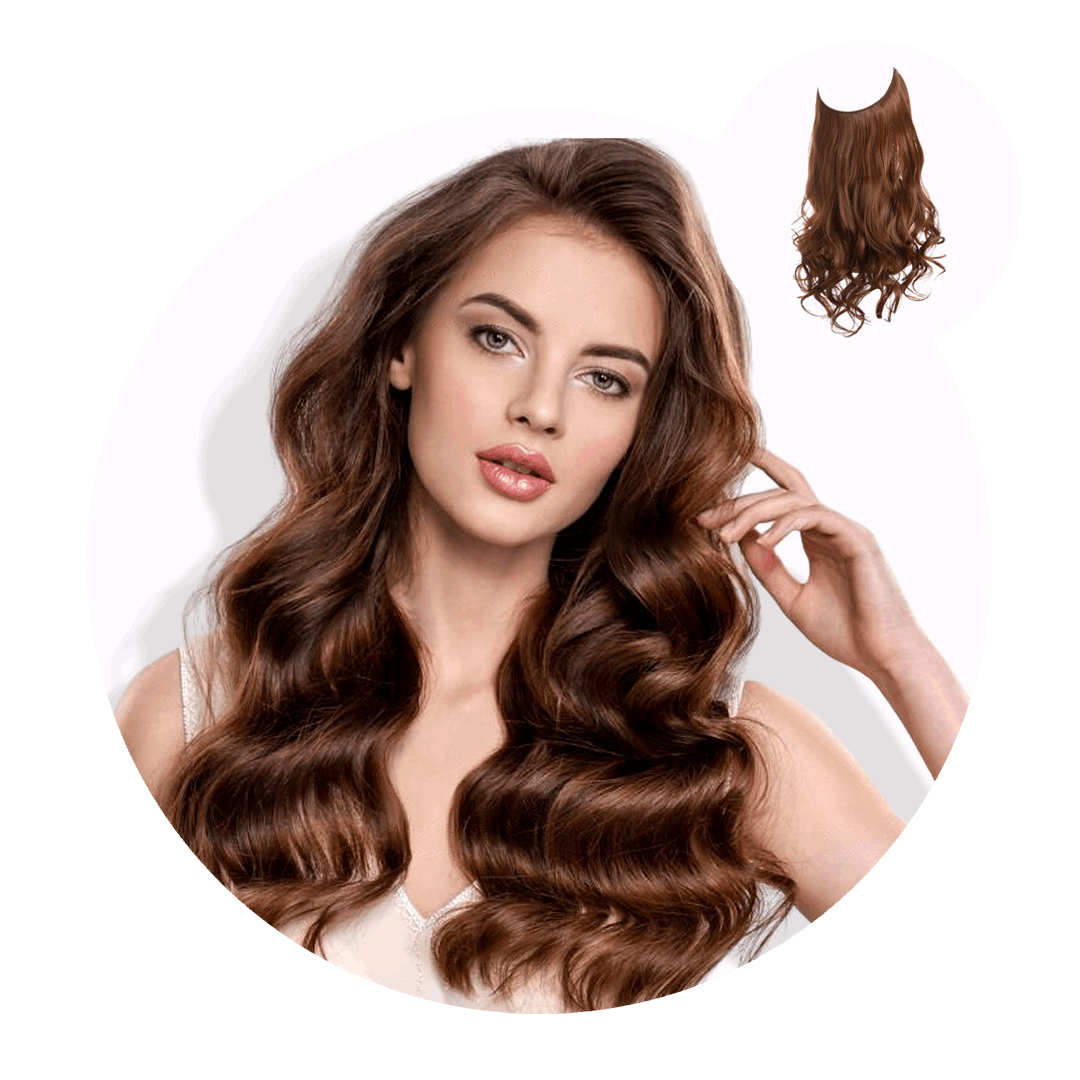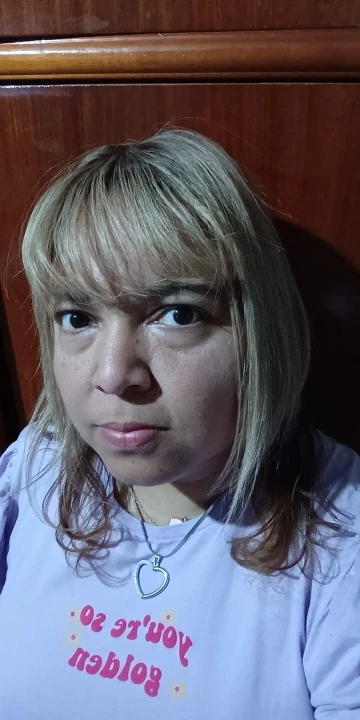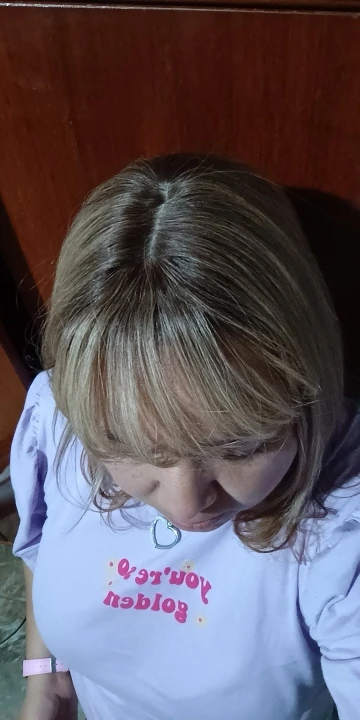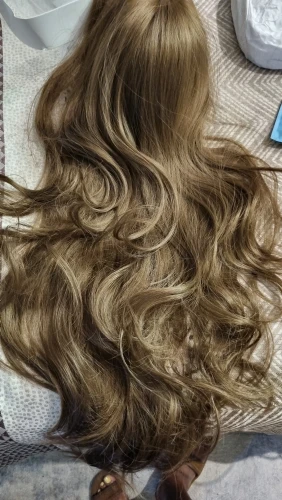When choosing between clip-in and tape-in hair extensions, the decision often comes down to your lifestyle, styling needs, and how much maintenance you're willing to commit to. Clip-ins are perfect for temporary use, offering flexibility and ease of application, while tape-ins provide a more natural, semi-permanent look but require professional installation and regular upkeep.
Here’s what you need to know to avoid common mistakes:
- Clip-Ins: Ensure proper placement below the part line to avoid bumps. Secure them with backcombing for better grip and never leave them in overnight to prevent tangling.
- Tape-Ins: Avoid washing your hair within 48–72 hours post-application to maintain adhesive strength. Use only sulfate-free, alcohol-free, and oil-free products to prevent bond weakening.
Quick Comparison:
| Feature | Clip-Ins | Tape-Ins |
|---|---|---|
| Application | DIY, quick to attach and remove | Requires a professional for installation |
| Longevity | Temporary; remove daily | Semi-permanent; lasts 6–8 weeks per session |
| Maintenance | Minimal; remove before sleeping | Requires regular care and professional upkeep |
| Styling Limitations | Avoid heat on clips; easy to reposition | Avoid heat near tape bonds |
| Cost | Lower upfront cost | Higher initial cost plus maintenance fees |
Tape In Hair Extensions? Better Than Clip In Extensions?
Common Mistakes with Clip-In Extensions
Clip-in extensions are a fantastic way to add length and volume, but even minor mistakes - like improper placement or not securing them tightly - can ruin the natural look you're aiming for.
Wrong Placement
One of the most common issues is placing the extensions too high on your head, which can make them look unnatural. To avoid this, position the wefts at or below the level of your ears or eyebrows. This ensures your natural hair has enough length to cover the clips properly. A good rule of thumb? Place the extensions about 1 cm below your part. Clipping them directly on your part line often leads to bumps and an uneven flow. Instead, work around your part to keep the overall look smooth and seamless.
Loose Attachment
Proper placement is only half the battle - secure attachment is just as important. If you don’t leave enough of your natural hair to cover the wefts, they can feel loose or even slip out. For silky or fine hair, gently backcombing the roots before clipping in the extensions can help create the grip needed for a firm hold. Taking this extra step ensures your extensions stay put and blend effortlessly with your natural hair.
Common Mistakes with Tape-In Extensions
Tape-in extensions require careful handling to maintain their adhesive bonds and overall appearance. Even small missteps can lead to issues that compromise their longevity.
Washing Too Soon After Application
One major error is washing your hair too soon after having tape-ins applied. The adhesive needs time to fully bond with your natural hair, and washing too early can weaken this connection. According to Walker Tape®:
"We create our extension tapes using a modified acrylic adhesive that grows stronger over time. If they wash their hair within two days of getting extensions, then they run the risk of making the tape slip or weaken."
To avoid this, wait at least 48 hours before your first wash. Some professionals even recommend holding off for 72 hours to ensure the adhesive sets properly. During this waiting period, using a shower cap can help keep your hair completely dry. Once it’s time to wash, your choice of hair products becomes just as important.
Using the Wrong Products
The products you use can make or break the durability of your tape-in extensions. Ingredients like sulfates and alcohol are a no-go, as they strip natural oils, leading to dryness and tangling. Oil-based products, especially near the tape area, are another culprit - they can cause the adhesive to weaken and the extensions to slip out.
Sticky styling products such as hairspray, gel, and wax can also create buildup around the tapes, weakening the bond. Even sunscreen sprays and lotions can present issues, as many contain alcohol, oils, or silicones that interfere with the adhesive.
For best results, stick to sulfate-free shampoos and apply conditioners only from the mid-shaft down, steering clear of the tape area. Lightweight, alcohol-free hairsprays and talc-free dry shampoos are ideal for styling without compromising the extensions. Always double-check product ingredient lists to avoid harsh chemicals that could damage your tape-ins.
sbb-itb-08feb2f
Comparison Table: Clip-Ins vs. Tape-Ins – Mistakes and Solutions
Understanding common mistakes and their fixes is essential for maintaining healthy, natural-looking hair extensions. Here’s a breakdown of key issues and solutions for clip-in and tape-in extensions:
| Mistake Category | Clip-In Extensions | Tape-In Extensions |
|---|---|---|
| Placement Errors | Placing clips too high can lead to visible bumps and an unnatural look. | Poor sectioning during application can cause uneven weight distribution. |
| Placement Solution | Position clips below the part line for seamless blending. | Ensure professional sectioning for even weight distribution during installation. |
| Attachment Issues | Clips may slip if the hair is too smooth to grip securely. | Washing extensions too soon after application can weaken adhesive bonds. |
| Attachment Solution | Tease roots and use a light texture spray for better grip. | Wait as advised by your stylist before washing and stick to sulfate-free products. |
| Coverage Problems | Insufficient natural hair coverage can expose wefts. | Product buildup may make tape areas visible. |
| Coverage Solution | Ensure enough natural hair covers the wefts for a seamless look. | Avoid oil-based products near tape areas; choose alcohol-free styling products. |
| Maintenance Frequency | Leaving clip-ins in overnight can cause tangling and breakage. | Skipping professional reinstallation appointments can affect adhesive and appearance. |
| Maintenance Solution | Remove clip-ins before sleeping and wash after about 10 wears. | Schedule reinstallation every 6–8 weeks and limit washing to twice weekly. |
| Product Compatibility | Heavy styling products can weigh down clip-ins. | Products with sulfates, alcohol, or oils can weaken tape bonds. |
| Product Solution | Use lightweight, regular haircare products suitable for clip-ins. | Stick to products specifically formulated for tape-ins - sulfate-free, alcohol-free, and oil-free. |
| Heat Styling | Direct heat on clips can cause damage. | Heat tools near tape areas can weaken the adhesive. |
| Heat Solution | Avoid heat on clips; style hair in sections if necessary. | Focus heat styling on mid-lengths and ends, avoiding the tape areas. |
| Brushing Technique | Brushing from roots downward can tug on attachment points. | Aggressive brushing can loosen tape bonds. |
| Brushing Solution | Use sectioning clips and brush gently around attachment zones. | Brush gently from ends to roots with an extension-safe brush. |
The key difference between these two extension types lies in their maintenance. Clip-ins are easier to care for, offering the flexibility of complete removal, while tape-ins demand a more structured routine and professional upkeep. For premium-quality options tailored to Australian conditions, check out Silkara Hair's collection, which includes both clip-in and professional-grade extensions.
Pro tip: For clip-ins, mirror your weft placement on each side for balance and avoid overloading by using only the wefts you need. For tape-ins, investing in high-quality care products and following expert advice can extend their life and keep your hair looking its best.
Best Practices for Care and Longevity
Taking good care of your hair extensions is essential for keeping them looking natural and lasting longer. From gentle brushing to mindful styling, these steps will help protect both your extensions and your investment.
Brushing and Detangling
Brushing your extensions twice a day is a must to prevent tangling and breakage. As Louie Bridges, Front-end Web Developer and Content Writer at Beauty Club London, puts it:
"Regular brushing is key to keeping your hair extensions looking their best and lasting as long as possible. Brushing incorrectly or using the wrong tools can lead to tangles, shedding, and even damage to both your natural hair and the extensions."
To get the best results, start brushing at the ends and work your way up. This approach reduces stress on the attachment points and helps prevent breakage. Use a wide-tooth comb or a flat paddle brush with soft bristles, avoiding brushes with tightly packed bristles that might snag your extensions. For clip-in extensions, always remove them before brushing, laying them flat or holding them securely. For tape-in extensions, hold the tape tabs firmly and support the hair above the extensions while brushing to protect the bonds.
Stick to brushing only when your extensions are dry, as wet hair is more prone to damage. A detangling spray can make the process easier, and working in smaller sections helps ensure thorough brushing. Before bed, loosely braid or tie your hair to prevent tangling overnight. Once detangled, you’re ready to move on to styling.
Styling Tips
After proper detangling, careful styling can further extend the life of your extensions. When using heat tools, always apply a heat protectant spray first to shield your hair from dryness, breakage, and split ends. Stick to temperatures between 120°C and 150°C (around 250°F–300°F) and use low to medium heat settings to avoid damaging the extension fibres.
For even coverage, spray the heat protectant evenly, brush through your extensions to remove tangles, and section your hair into smaller parts. This ensures every strand is protected. Be cautious not to direct heat onto the bonds or wefts, especially with tape-ins, to maintain their integrity. Adding a nourishing hair oil to your routine, focusing on the mid-lengths and ends, can help restore moisture and keep your extensions looking their best.
Conclusion
Navigating the challenges of clip-in and tape-in extensions is key to achieving a flawless, natural look. Clip-ins are great for their flexibility and ease of use, making them ideal for beginners. However, they require careful placement and secure attachment to prevent slipping. Tape-ins, on the other hand, offer a more seamless and longer-lasting option but come with stricter maintenance requirements. For instance, you'll need to avoid premature washing and take extra care with the adhesive bonds. Plus, professional repositioning is typically needed every 6–8 weeks.
Taking proper care of your extensions ensures you get the most out of your investment. By avoiding common mistakes, you can fully enjoy the benefits of premium extensions from Silkara Hair. High-quality options made from 100% Remy human hair can last anywhere from 6 months to over a year with the right care, while cheaper alternatives often need replacing within weeks. On average, women spend between A$400 and A$800 on quality extensions, yet 65% damage them within the first three months.
Extensions from Silkara Hair are crafted from 100% human hair, designed to handle heat styling, washing, and colouring without losing their integrity. Thanks to their natural cuticle alignment, they resist tangling and frizz, offering a smooth, natural look with versatile styling options. By using sulfate-free products and brushing gently, you can extend the life of your extensions and enjoy stunning, natural-looking hair for months to come.
FAQs
What should I consider when choosing between clip-in and tape-in hair extensions?
When deciding between clip-in and tape-in hair extensions, it’s important to weigh your lifestyle, how much maintenance you’re up for, and how long you want your extensions to stay in place.
Clip-in extensions are a great choice for temporary use. They’re easy to apply, flexible for different hairstyles, and require very little upkeep. These are perfect if you’re looking for a quick change for special occasions or just want to switch up your look without any long-term commitment.
On the other hand, tape-in extensions offer a semi-permanent solution. They blend seamlessly with your natural hair, giving a more polished and natural appearance. With proper care, they can last for several weeks, but they do need regular maintenance to keep them secure and looking their best.
To choose the right option, consider how often you’ll wear the extensions, how much time you’re willing to dedicate to their care, and what works best for your hair type.
What’s the best way to care for tape-in extensions to make them last longer and protect my natural hair?
To keep your tape-in extensions looking their best and safeguard your natural hair, here are some practical tips:
- Brush with care: Use a soft-bristle brush twice daily, starting at the ends and gradually working your way up to avoid tugging.
- Stick to sulphate-free, extension-safe products: These help preserve the adhesive and maintain the quality of the extensions.
- Protect while you sleep: Tie your hair into a loose braid or switch to a silk pillowcase to minimise friction and reduce tangling.
- Be cautious with heat and oils: Keep heat styling tools and oil-based products away from the roots to prevent the adhesive from weakening.
For optimal results, book maintenance appointments every 6–8 weeks to adjust or replace the extensions as needed. With proper care, your extensions will stay flawless and blend effortlessly with your natural hair.
How can I care for my clip-in extensions to keep them looking great and lasting longer?
To keep your clip-in extensions in great condition and extend their lifespan, treat them with care. Use a natural bristle paddle brush or a loop brush to gently detangle them without causing damage. Only wash your extensions when necessary - usually after 13–18 wears - and stick to a sulphate-free, gentle shampoo and conditioner to keep the hair soft and hydrated. Avoid using harsh products that could dry them out.
When you're not wearing your extensions, store them in a protective case or a clean, dry space to prevent tangling and dust accumulation. Limit heat styling as much as possible, but if you need to use heat tools, always apply a heat protectant first to maintain the hair's quality. With the right care routine, your clip-in extensions can last between 3 to 6 months, giving you that salon-fresh look time and time again.






